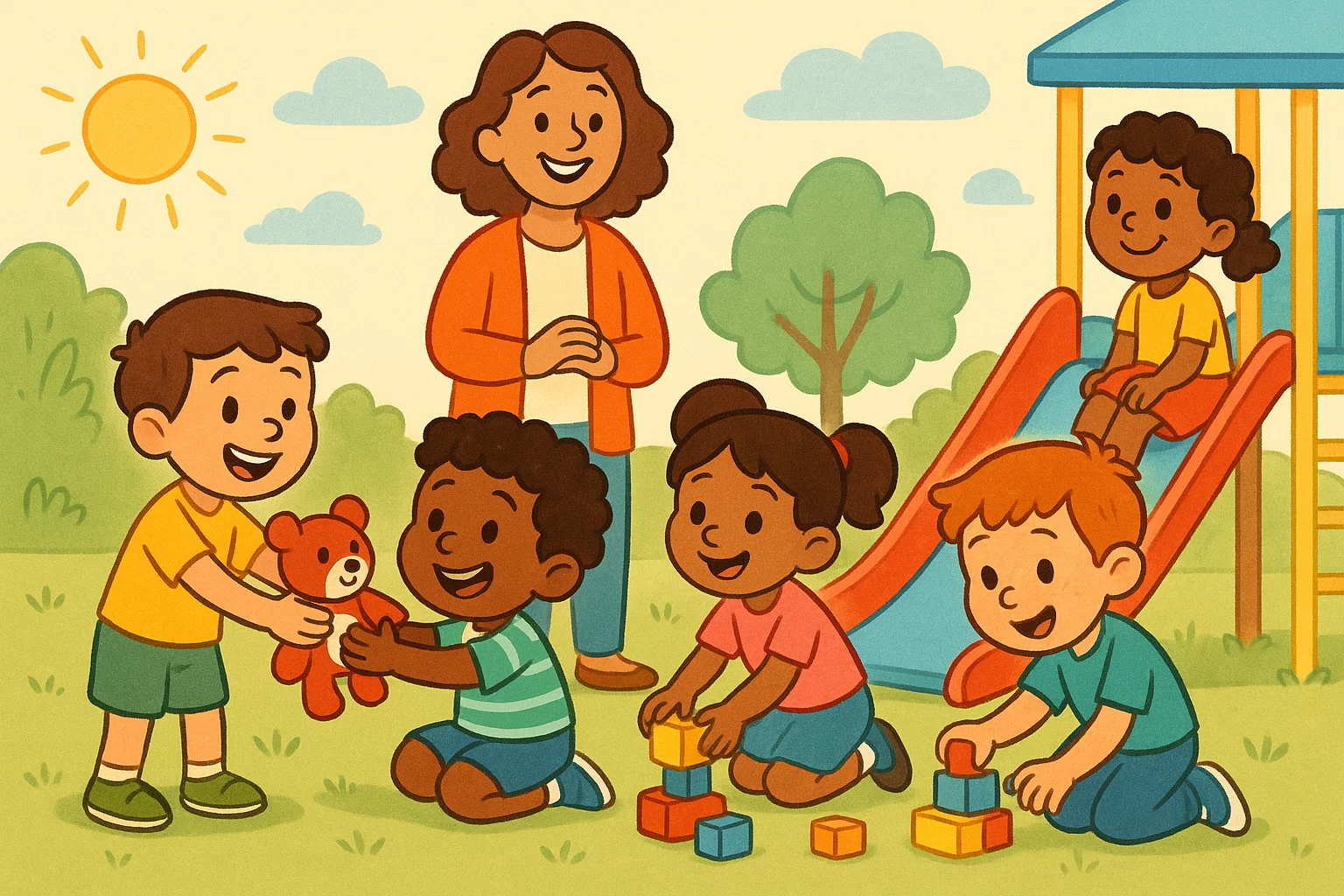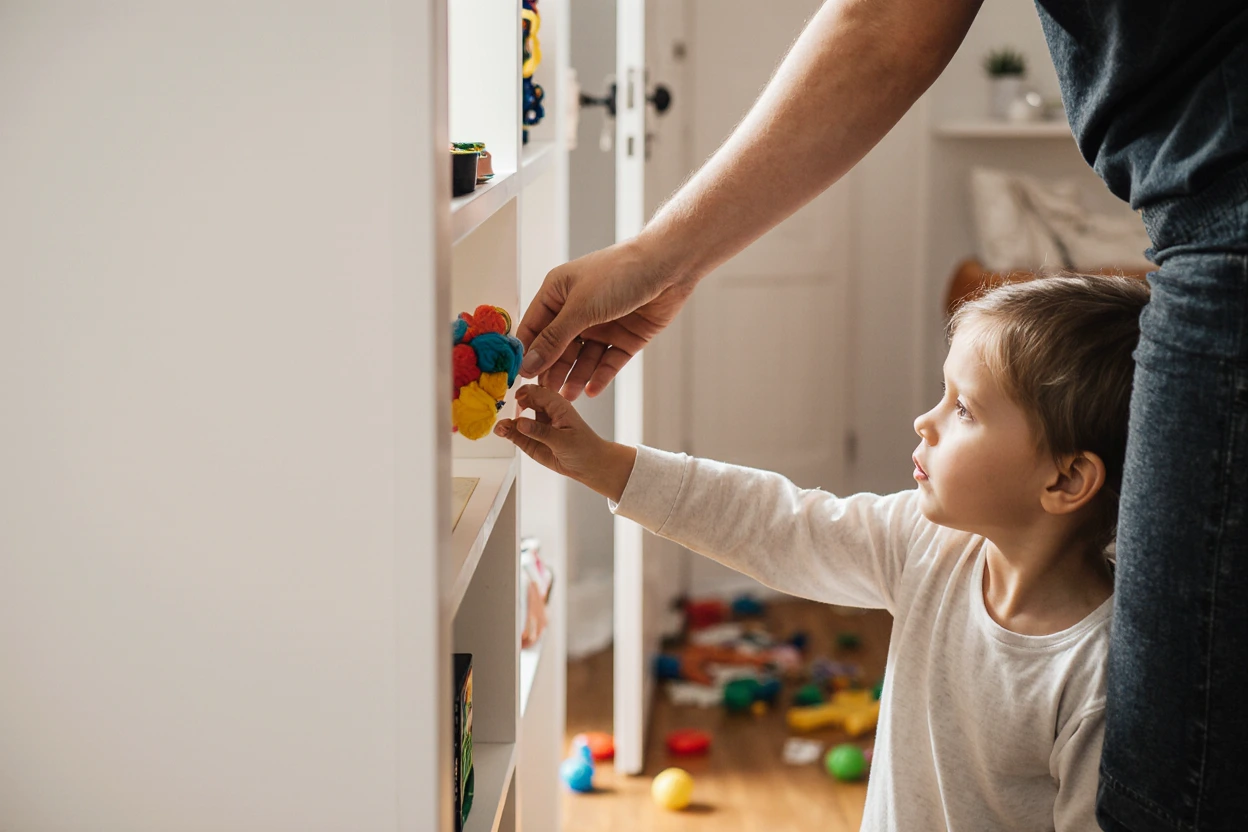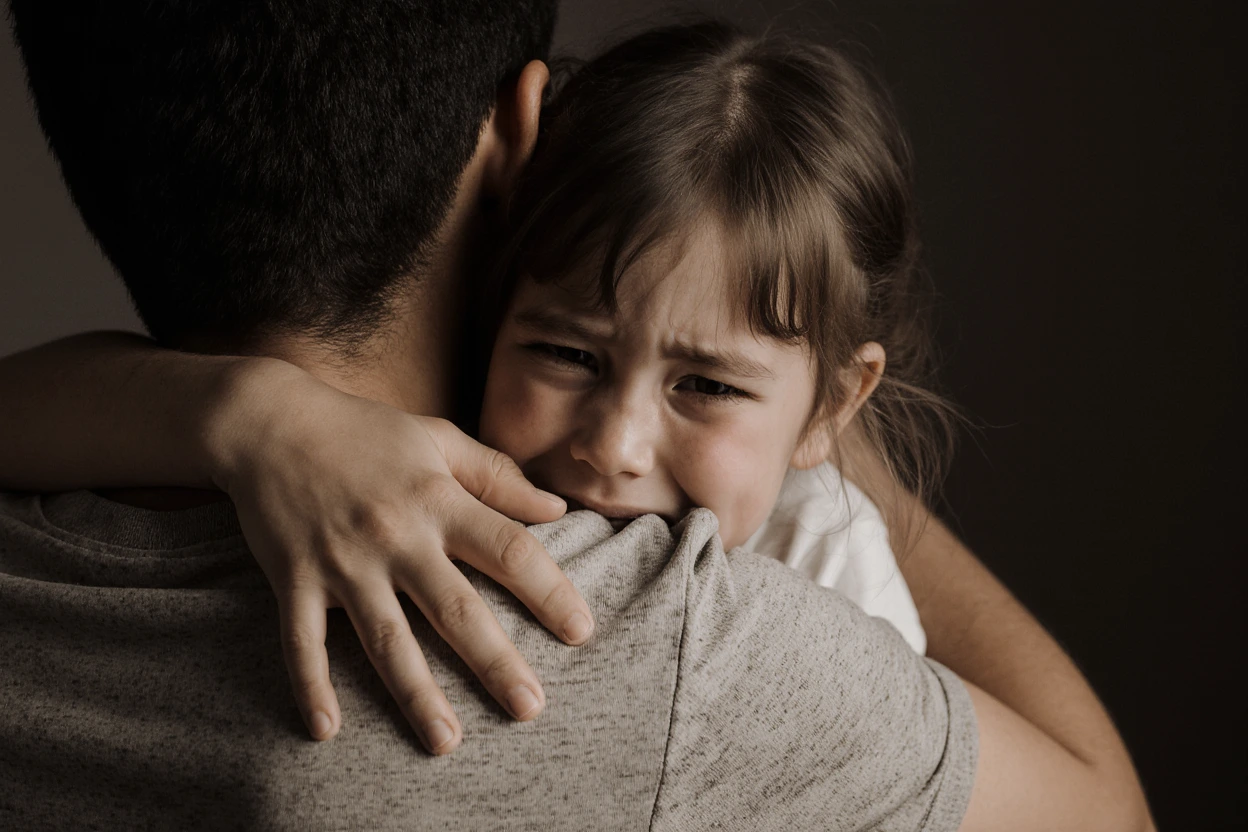Effective Discipline: Positive Strategies and Techniques to Guide Your Child

Discipline represents one of the most challenging yet crucial aspects of parenting. When we think about how to discipline your child, it’s essential to understand that effective discipline isn’t about punishment—it’s about teaching. The goal is to help teach your child self-control, let your child learn appropriate behavior, and understand that actions have consequences.
Positive discipline strategies are more effective than punitive measures in promoting good behavior and emotional development. Rather than focusing on what children shouldn’t do, effective discipline methods guide them toward understanding what they should do and why. Using positive discipline helps in shaping responsible individuals.
Every child is unique, and what works for one may not work for another. Age-appropriate discipline strategies consider your child’s developmental stage, temperament, and individual needs. The key to disciplining children is consistency, patience, and always keeping your composure during challenging moments.
When Discipline Techniques Work Best
Understanding when and how to implement discipline tactics can make the difference between success and frustration. Effective discipline works best when:
Timing matters significantly. Address misbehavior immediately when possible, as children—especially younger ones—may not connect delayed consequences with their actions. However, if emotions are running high, create a cooling off period before addressing the behavior.
Consistency is maintained across caregivers. When parents and caregivers use the same discipline methods and expectations, children learn faster and feel more secure. Mixed messages can confuse children and undermine your efforts.
The child is developmentally ready. A toddler’s understanding of rules differs vastly from that of older children. Tailor your approach to match your child’s cognitive and emotional development.
Positive relationships exist. Discipline is most effective when built on a foundation of trust, love, and connection. Children are more likely to cooperate when they feel understood and valued.
Exploring 10 Discipline Types
1. Positive Reinforcement ✨
Positive reinforcement focuses on acknowledging and rewarding good behavior rather than solely addressing negative actions. This approach helps children understand what you expect and motivates them to repeat desirable behaviors.
How it works: When you catch your child displaying positive behavior, immediately acknowledge it with specific praise, attention, or rewards. For example, “I noticed how gently you shared your toys with your sister. That showed real kindness.”
Implementation strategies:
- Use behavior charts for visual tracking of progress
- Offer age-appropriate rewards that match the behavior
- Provide immediate feedback when possible
- Be specific about what behavior you’re reinforcing
Research suggests that children respond more positively to recognition of good behavior than to punishment for bad behavior. This method helps build self-esteem while teaching your child appropriate conduct.
2. Natural Consequences
Natural consequences let your child experience the direct results of their actions without parental intervention. This powerful teaching tool helps children learn that actions have consequences in the real world.
Examples of natural consequences:
- Forgetting lunch results in being hungry
- Not wearing a coat leads to feeling cold
- Procrastinating on homework causes stress before deadlines
- Breaking a toy means it can’t be played with
When to use natural consequences: This method works best when the consequence is safe, age-appropriate, and directly related to the behavior. Always ensure your child won’t be harmed by experiencing the natural result.
Parent’s role: Resist the urge to rescue your child from natural consequences. Instead, offer empathy and help them problem-solve for next time. You might say, “I see you’re cold. What could you do differently tomorrow?” Let her experience the result.
3. Logical Consequences

Unlike natural consequences, logical consequences are imposed by parents but directly relate to the misbehavior. These consequences help children understand the connection between their actions and outcomes while teaching your child responsibility.
Key characteristics of logical consequences:
- Related: The consequence connects to the behavior
- Respectful: Delivered without shame or humiliation
- Reasonable: Appropriate for the child’s age and the situation
| Behavior | Logical Consequence |
| Throwing food | Meal ends, clean up required |
| Rough play with toys | Toys removed for specific time (taking away item) |
| Not completing chores | Loss of privileges until completed |
| Hitting others | Separation from the group |
Implementation tip: Explain the connection between the behavior and consequence: “When you throw toys, they could break or hurt someone. The toys need to be put away for safety.”
4. Time-Out and Time-In

Timeout involves removing a child from a situation to help them calm down and reflect on their behavior. Time-in keeps the child close while providing emotional support and teaching moments.
Traditional timeout guidelines:
- Use one minute per year of age
- Choose a boring, safe location
- Explain briefly why they’re in timeout
- Require the child to sit quietly before returning
Time-in alternative: This approach involves staying with your child during emotional moments, offering comfort while teaching coping strategies. It’s particularly effective for children who struggle with separation or have experienced trauma.
When each works best:
- Time-out: For defiant behavior or when a child needs space to self-regulate
- Time-in: For emotional outbursts, anxiety, or when connection is needed
5. Setting Boundaries 🏗️
Clear, consistent boundaries provide children with structure and security. When children know what’s expected, they’re more likely to exhibit good behavior and feel confident in their environment.
Effective boundary-setting strategies:
- State rules positively when possible (“Walk please” instead of “Don’t run”)
- Explain the reasoning behind rules
- Be consistent in enforcement
- Involve children in creating family rules when age-appropriate
Common boundary areas:
- Safety rules (non-negotiable)
- Respect for others and property
- Screen time limits
- Bedtime and routine expectations
- Household responsibilities
Remember that boundaries should be firm but loving. The goal is to help your child develop internal self-control rather than simply comply out of fear.
6. Teaching Behavior
This proactive approach focuses on explicitly teaching your child what good behavior looks like rather than assuming they inherently know. It transforms opportunities to teach into valuable learning moments.
Teaching strategies:
- Modeling: Demonstrate the behavior you want to see
- Practice: Role-play appropriate responses to common situations
- Explanation: Help children understand why certain behaviors are important
- Reinforcement: Acknowledge when children apply what they’ve learned
Real-world application: If your child struggles with sharing, don’t just say “share your toys.” Instead, show them how to offer a toy, explain why sharing makes friends happy, and practice taking turns during play. This helps your child once again learn cooperation.
Age-appropriate considerations:
- Toddlers: Simple, concrete demonstrations
- Preschoolers: Stories and role-playing
- School-age: Discussions about social expectations and empathy
7. Empathetic Discipline

Empathetic discipline acknowledges children’s feelings while still maintaining expectations for behavior. This approach helps children learn emotional regulation while understanding that all feelings are valid, even if all behaviors aren’t acceptable.
Core principles:
- Validate emotions: “I see you’re angry about bedtime”
- Set limits on behavior: “But throwing toys isn’t okay”
- Teach alternatives: “When you feel angry, you can use your words or ask for help”
- Offer comfort: “I’m here to help you through this”
Benefits of empathetic discipline:
- Builds emotional intelligence
- Strengthens parent-child connection
- Teaches healthy emotional expression
- Reduces power struggles
Example scenario: When your child has a tantrum about leaving the park, acknowledge their disappointment while maintaining the boundary: “You’re really sad to leave the park. It’s hard when fun things end. We still need to go, but we can talk about what you enjoyed most.” Avoid hurtful words that could damage trust.
8. Offering Choices
Giving your child age-appropriate choices helps them develop decision-making skills while reducing power struggles. This strategy works particularly well with strong-willed children who need some control over their environment.
Types of choices:
- Simple choices: “Would you like to brush your teeth first or put on pajamas first?”
- Consequence choices: “You can clean up your toys now or after dinner, but they need to be cleaned up”
- Method choices: “Would you like to walk to the car or would you like me to carry you?”
Guidelines for offering choices:
- Ensure all options are acceptable to you
- Limit choices to 2-3 options to prevent overwhelm
- Be prepared to follow through with their decision
- Don’t offer choices about non-negotiable items
When NOT to offer choices:
- Safety situations requiring immediate compliance
- When you’re not prepared to honor their choice
- During emotional meltdowns when decision-making is difficult
9. Proactive Discipline
Proactive discipline prevents misbehavior before it occurs by anticipating challenges and setting children up for success. This approach is particularly effective for children who struggle in predictable situations when your child often misbehaves.
Proactive strategies:
- Environmental setup: Remove temptations and create child-friendly spaces
- Routine establishment: Predictable schedules reduce anxiety and misbehavior
- Preparation: Discuss expectations before entering new situations
- Skill building: Teach your child coping strategies during calm moments
Practical applications:
- Before grocery shopping: Discuss behavior expectations and bring snacks
- During transitions: Give warnings before activities end
- In social situations: Practice greeting people and using polite words
- At bedtime: Create calming routines that signal sleep time
Benefits: Proactive discipline reduces stress for both parents and children while building confidence and independence.
10. Reflective Discipline

Reflective discipline helps children think about their behavior and develop problem-solving skills. This approach is most effective with older children who can engage in abstract thinking.
Reflective questions to ask:
- “What happened right before this behavior?”
- “How do you think your actions affected others?”
- “What could you do differently next time?”
- “How can we solve this problem together?”
Implementation process:
- Wait for emotions to calm down
- Ask open-ended questions about the situation
- Listen without judgment
- Guide them toward solutions
- Help them make amends if needed
Example: After a sibling conflict, sit down with your child and ask, “Help me understand what happened with your brother. What was going on right before the argument started?” This approach helps children develop emotional intelligence and problem-solving skills. It helps them correct their behavior.
The Goal of Effective Discipline: Strategies to Reinforce Good Positive Discipline
Effective discipline is about teaching, not punishing. The 10 types of discipline outlined here provide a comprehensive toolkit for helping your child develop self-control, empathy, and appropriate behavior. Remember that every child is different, and what works for one may not work for another.
The key to successful discipline lies in consistency, patience, and maintaining your composure during challenging moments. Focus on building a positive parenting relationship with your child while setting clear expectations and boundaries. When children want to cooperate and feel loved and understood, they’re more likely to learn from their mistakes.
Most importantly, remember that discipline is a long-term investment in your child’s character development. The goal isn’t immediate compliance but rather raising a child who can make good choices independently and treat others with respect and kindness.
Your Questions on Discipline Answered
Is physical punishment ever an effective discipline method?
While some parents were raised with it, researchs now shows that physical punishment is not an effective long-term solution. Methods like spanking or other forms of corporal punishment may stop a child’s behavior in the moment, but they don’t teach children better alternatives. In fact, studies on brain development suggest that fear-based tactics can create anxiety and do not help a child develop self-control. A truly effective and positive approach avoids physical force and verbal abuse.
If I'm supposed to avoid punishing, what are some other ways to discipline?
The most effective approach to discipline is one that aims to focus on teaching rather than punishing. There are many positive ways to guide your child. Using positive discipline techniques, such as logical consequences or redirection, can help them learn right from wrong. The goal is to build their internal sense of self-discipline and show them appropriate ways to handle their feelings and actions.
What should I do when my child hits? What’s an appropriate consequence?
When a child hits, it’s important to intervene immediately, as this is unacceptable behaviour. First, ensure the person who was hit is okay. A logical consequence would be to remove the child from the situation for a short time. You could say, “We use gentle hands. Since you hit, we need to take a break from playing.” This action directly connects to the behavior and can help the child understand the immediate result of their choice and ultimately change behavior.
Why is it so important for rules to be consistent?
Having clear and consistent rules helps a child feel secure because they know what to expect. When you enforce basic rules reliably, you help your child understand that certain rules are non-negotiable. If caregivers aren’t on the same page, a child may become confused and test boundaries more often. When children know you will calmly and reliably follow rules, it builds child respect for you and the household structure.
How can I stay calm when I’m feeling frustrated with my child?
It’s completely normal to feel overwhelmed. The first step is to pause and take a few deep breaths. It’s okay to tell your child, “I’m feeling upset right now, so I’m going to take a minute before we talk about this.” This models a healthy way to manage strong emotions and prevents you from reacting impulsively. This calm approach to discipline is more effective and preserves your connection.
Do these strategies work for a preschooler or only older kids?
These healthy discipline strategies are effective for all ages, but they must be adapted. With younger children, it’s important to have realistic expectations. A preschooler won’t understand a long explanation. For them, simple, immediate actions are better. For example, if they throw a toy, you can calmly take it away for a few minutes. You don’t need a different strategy for every situation, but you do need to tailor your response to their developmental level to encourage good behavior.
